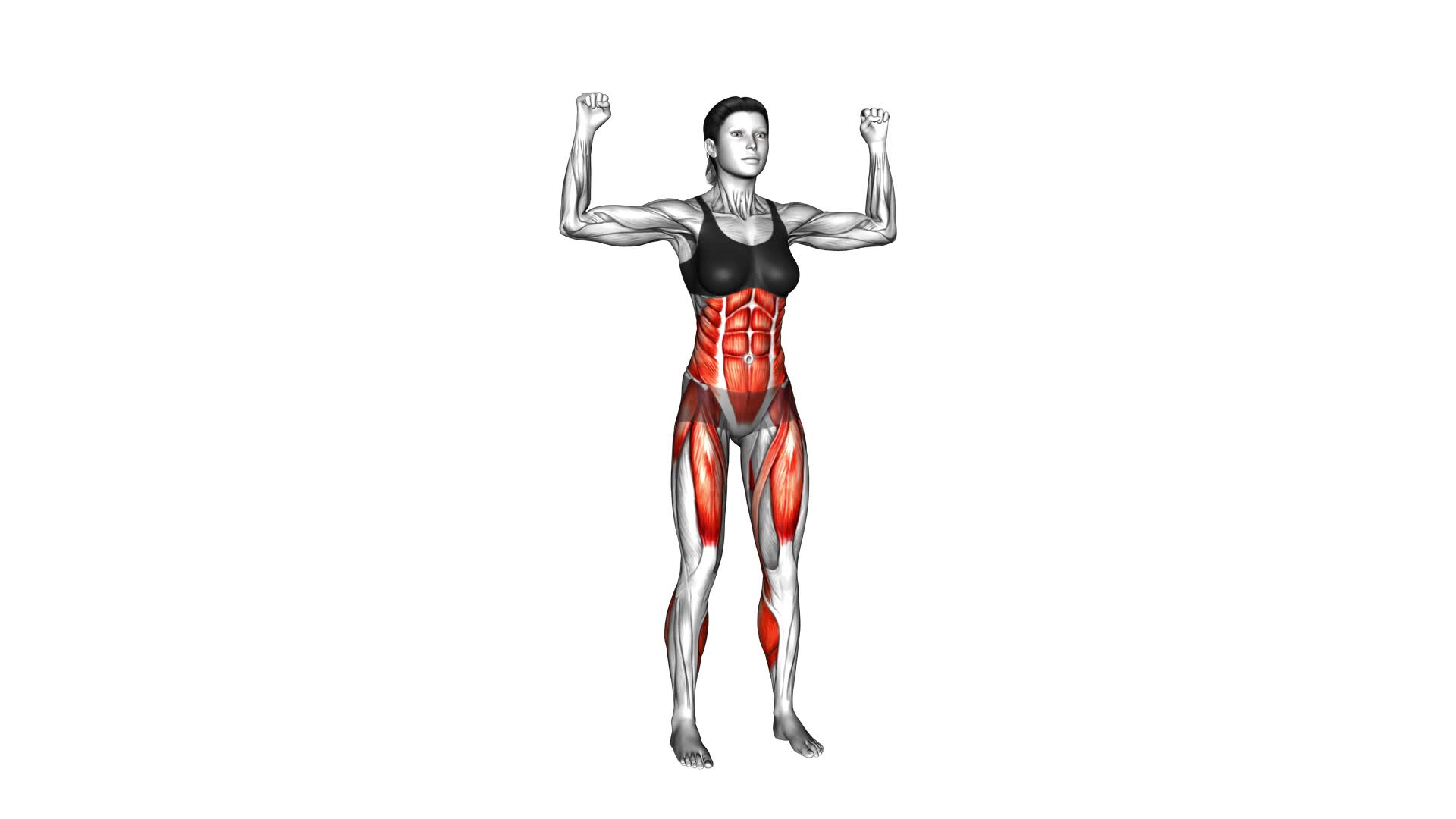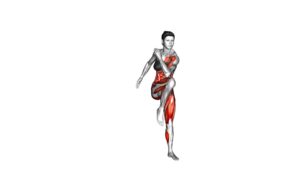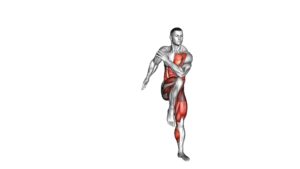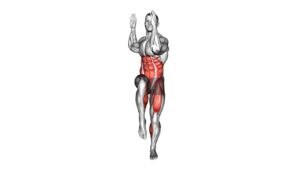Twisting Knee-up (female) – Video Exercise Guide & Tips

Looking to tone your abs and strengthen your core? Check out this video exercise guide and tips for the twisting knee-up (female).
Watch This Exercise Video
You'll discover the benefits of this exercise, the equipment you'll need, and proper form and technique.
Learn common mistakes to avoid and variations to challenge yourself.
Plus, find expert tips on incorporating the twisting knee-up into your workout routine.
Get ready to feel the burn and achieve your fitness goals!
Key Takeaways
- Targets core muscles, including obliques, transverse abdominis, and rectus abdominis
- Strengthens core and improves stability and balance
- Tones and sculpts the legs, particularly the hip flexors and quadriceps
- Enhances overall abdominal strength and definition
Benefits of Twisting Knee-up (female)
You can experience numerous benefits from performing the twisting knee-up exercise. This exercise specifically targets the core muscles, including the obliques, transverse abdominis, and rectus abdominis. By engaging these muscles, you can strengthen your core and improve your overall stability and balance.
In addition to its core-strengthening benefits, the twisting knee-up exercise also helps to tone and sculpt the legs, particularly the hip flexors and quadriceps.
Incorporating the twisting knee-up exercise into your workout routine is simple and effective. Start by lying on your back with your legs extended and your arms by your sides. Bend your knees and place your feet flat on the floor, hip-width apart. From this position, engage your core and lift both knees towards your chest. As you do this, twist your torso to the right and bring your left elbow towards your right knee. Return to the starting position and repeat on the other side.
Aim for 2-3 sets of 10-12 repetitions, gradually increasing the intensity as you get stronger.
Equipment Needed for Twisting Knee-Up (Female)
To perform the twisting knee-up exercise, you'll need a few essential pieces of equipment. First and foremost, you'll need an exercise mat or a comfortable surface to lie on.
Additionally, you'll need a sturdy support such as a pull-up bar or a suspension trainer to hold onto while performing the exercise.
If you don't have access to these specific pieces of equipment, there are alternative options that can be used, such as a stable chair or a sturdy table.
Essential Equipment for Twist
To perform the Twisting Knee-up exercise (female), you'll need essential equipment specific to this movement. The good news is that you don't need any fancy or expensive equipment for this exercise. All you need is a sturdy, stable surface to support your body weight.
A workout mat or an exercise mat would be ideal as it provides cushioning and prevents slipping. Make sure the mat is large enough to accommodate your entire body comfortably. When choosing a mat, consider its thickness and durability to ensure safety and longevity.
It's also important to wear comfortable workout attire and supportive athletic shoes to minimize any potential discomfort or injuries. With these basic equipment options and safety precautions in place, you can safely and effectively perform the Twisting Knee-up exercise.
Alternate Equipment Options
When considering alternate equipment options for the Twisting Knee-up exercise (female), it's important to explore additional tools that can enhance the effectiveness and challenge of this movement.
There are several alternate equipment options that can be used to modify and vary the Twisting Knee-up exercise.
One option is to use a stability ball. By placing the stability ball between your knees and squeezing it as you perform the knee-up movement, you can engage your core and inner thigh muscles even more.
Another option is to use resistance bands. Attaching a resistance band to a sturdy anchor point and wrapping it around your knees can add resistance to the knee-up movement, making it more challenging.
Finally, you can also use ankle weights to increase the intensity of the exercise. By strapping on ankle weights, you'll add resistance to the knee-up movement, targeting your hip flexors and abdominal muscles even more effectively.
These alternate equipment options can provide modifications and variations to the Twisting Knee-up exercise, allowing you to customize your workout and achieve your fitness goals.
Proper Form and Technique for Twisting Knee-Up (Female)
Maintain a strong core and engage your obliques by twisting your knees up towards your chest during this exercise. Proper form and technique for twisting knee-up (female) are crucial for maximizing the benefits of this exercise.
Here are some techniques to keep in mind:
- Start by lying flat on your back with your legs extended and your arms by your sides.
- Bend your knees and lift your feet off the ground, keeping them together.
- Slowly twist your knees to one side, aiming to touch the ground with your knees.
- Keep your upper body stable and your lower back pressed into the floor.
- Return to the starting position and repeat the movement on the other side.
Maintaining proper form throughout the exercise is essential to target the desired muscles effectively. By engaging your core and obliques, you can strengthen these muscles and improve your stability. Additionally, focusing on your breathing and exhaling as you twist your knees can help activate your core even further.
Remember to start with a weight and intensity level that's suitable for your fitness level and gradually increase as you become more comfortable with the exercise.
Common Mistakes to Avoid When Doing Twisting Knee-Up (Female)
To avoid common mistakes when performing the twisting knee-up exercise (female), ensure proper alignment and control throughout the movement.
One common mistake is allowing the hips to rotate excessively during the exercise. This can put strain on the lower back and decrease the effectiveness of the workout. To avoid this, focus on engaging your core muscles and keeping your hips stable throughout the movement.
Another common mistake is using momentum to swing the legs up instead of relying on the strength of the abdominal muscles. This can lead to a lack of control and increase the risk of injury. Instead, focus on using your abdominal muscles to lift your legs in a controlled manner, keeping the movement slow and controlled.
Lastly, avoid rounding your back during the exercise. This can put unnecessary strain on the spine and reduce the effectiveness of the workout. Instead, maintain a neutral spine by engaging your core and keeping your back straight throughout the movement.
Variations and Modifications for Twisting Knee-Up (Female)
When performing the twisting knee-up exercise, there are various modifications and variations you can incorporate to suit your fitness level and preferences.
You can choose different difficulty levels, such as increasing or decreasing the number of repetitions or adding weights for an extra challenge.
Additionally, you have the option to use equipment like resistance bands or stability balls to target different muscle groups.
However, it's important to always prioritize safety and consider any necessary precautions, such as maintaining proper form and listening to your body's limits.
Different Difficulty Levels
To modify the twisting knee-up exercise for different difficulty levels, adjust the height of the knee lift and the speed of the movement. By making these simple adjustments, you can customize the exercise to suit your fitness level and goals. Here are some progression options to consider:
- Increase the height of the knee lift: Lift your knee higher towards your chest as you twist your torso, engaging your core muscles even more.
- Speed up the movement: Perform the twisting knee-up exercise at a faster pace to challenge your coordination and cardiovascular endurance.
- Add ankle weights: Strap on ankle weights to increase the resistance and make the exercise more challenging for your lower body.
- Incorporate a medicine ball: Hold a medicine ball in your hands as you perform the twisting knee-up to add an extra challenge for your upper body and core.
- Combine with other exercises: Integrate the twisting knee-up exercise into a circuit or interval training routine to further enhance its difficulty and effectiveness.
Remember to always listen to your body and progress at a pace that feels comfortable yet challenging for you.
Equipment Options Available
Explore the equipment options available for modifying and varying the twisting knee-up exercise for females.
When it comes to the twisting knee-up exercise, there are several equipment options that can add variety and challenge to your workout routine. One option is using a stability ball. By placing the stability ball between your legs and squeezing it as you perform the knee-up, you engage your inner thighs and core muscles even more.
Another equipment option is using ankle weights. By strapping on ankle weights, you increase the resistance and intensity of the exercise, helping to build strength in your lower body.
These equipment options not only provide a new dimension to your workout but also enhance the benefits of twisting knee-up, such as strengthening your abs, obliques, and hip flexors.
Now, let's move on to the next section and discuss the safety precautions you should consider when performing the twisting knee-up exercise.
Safety Precautions to Consider
To ensure safety and maximize the effectiveness of the twisting knee-up exercise, it's important to consider variations and modifications specifically tailored for females. By taking precautions and preparing properly, you can prevent knee injuries and get the most out of your workout. Here are some safety measures to keep in mind:
- Warm up before starting the exercise to increase blood flow and loosen up your muscles.
- Use a yoga mat or exercise mat to provide cushioning and support for your knees.
- Start with a modified version of the exercise by keeping one leg on the ground and gradually progress to lifting both legs.
- Engage your core muscles throughout the exercise to stabilize your body and protect your lower back.
- Listen to your body and stop if you experience any pain or discomfort.
By following these safety precautions, you can safely incorporate the twisting knee-up exercise into your routine and avoid potential injuries.
Now, let's move on to the next section for tips on how to make the most of this workout.
Tips for Incorporating Twisting Knee-Up (Female) Into Your Workout Routine
Incorporate the twisting knee-up (female) into your workout routine for a challenging and effective full-body exercise. This exercise not only helps in toning your abdominal muscles but also engages your obliques, hip flexors, and quads. To incorporate cardio into your routine, you can perform the twisting knee-up at a faster pace, increasing your heart rate and boosting calorie burn.
To begin, start by lying on your back with your legs extended and arms by your sides. Bend your knees and place your feet flat on the floor, hip-width apart. Place your hands behind your head, keeping your elbows wide. Engage your core and lift your head, neck, and shoulders off the ground.
Now, lift your right knee towards your chest while simultaneously rotating your torso to bring your left elbow towards your right knee. Exhale as you perform the movement. Pause for a moment, then return to the starting position. Repeat the movement on the other side, bringing your left knee towards your chest and your right elbow towards your left knee.
To maximize the benefits of core strengthening, focus on maintaining proper form throughout the exercise. Keep your core engaged, avoid pulling on your neck, and exhale as you twist. Start with a few repetitions and gradually increase the number as you build strength and endurance. Remember to listen to your body and modify the exercise as needed.
Incorporating the twisting knee-up into your workout routine will help take your fitness to the next level.
Frequently Asked Questions
How Many Calories Does Twisting Knee-Up (Female) Burn?
Twisting knee-up (female) is a great exercise for burning calories and reaping numerous benefits. By incorporating a twisting motion, it engages your core, glutes, and thighs, helping to strengthen and tone those areas.
While the exact number of calories burned varies based on factors like intensity and duration, twisting knee-up can be an effective calorie-burning exercise.
Additionally, this exercise improves balance, stability, and overall core strength, making it a valuable addition to any workout routine.
Can Men Also Perform Twisting Knee-Up Exercise?
Yes, men can also perform the twisting knee-up exercise. This exercise offers several benefits for men, including improving core strength and stability, enhancing balance, and targeting the abdominal muscles.
Men can perform variations of the twisting knee-up exercise by adjusting the intensity or adding weights to challenge themselves further. It's important to maintain proper form and start with a weight that's suitable for your fitness level.
Always consult with a fitness professional before starting any new exercise routine.
Are There Any Specific Warm-Up Exercises Recommended Before Starting Twisting Knee-Up?
Before starting the twisting knee-up exercise, it's important to do specific warm-up exercises to prepare your muscles. This will help prevent injuries and improve your performance.
Some recommended warm-up exercises include leg swings, hip rotations, and ankle circles. These exercises will increase blood flow to the muscles, improve flexibility, and reduce the risk of muscle strains.
Incorporating these warm-up exercises into your routine will enhance the benefits of the twisting knee-up exercise and make your workout more effective.
Can Twisting Knee-Up Exercise Help in Reducing Belly Fat?
Twisting knee-up exercises primarily focus on core strength and stability. While they can help tone the abdominal muscles, they alone may not be sufficient for reducing belly fat.
To effectively reduce belly fat, it's important to combine twisting knee-up exercises with a balanced diet and overall calorie deficit. Incorporating cardiovascular exercises and full-body strength training into your routine can also help burn calories and promote overall fat loss, including in the abdominal area.
How Frequently Should Twisting Knee-Up Exercise Be Performed for Best Results?
To achieve the best results from the twisting knee-up exercise, it's important to perform it at the optimal frequency. Consistency is key. Aim to do this exercise at least three times a week. This will allow your muscles to adapt and strengthen over time.
Additionally, to enhance the effectiveness of the exercise, try incorporating different variations. For example, you can add weights or increase the speed of the movement.
Remember to always listen to your body and consult with a professional if needed.
Conclusion
Incorporating twisting knee-ups into your workout routine can offer numerous benefits for females.
This exercise targets the core muscles, helping to strengthen and tone the abs, obliques, and lower back.
It also improves stability and balance.
To perform this exercise correctly, ensure proper form and technique, and avoid common mistakes.
By adding variations and modifications, you can further challenge yourself and progress in your fitness journey.
Remember to consult with a fitness professional before starting any new exercise routine.

Author
Years ago, the spark of my life’s passion ignited in my mind the moment I stepped into the local gym for the first time. The inaugural bead of perspiration, the initial endeavor, the very first surge of endorphins, and a sense of pride that washed over me post-workout marked the beginning of my deep-seated interest in strength sports, fitness, and sports nutrition. This very curiosity blossomed rapidly into a profound fascination, propelling me to earn a Master’s degree in Physical Education from the Academy of Physical Education in Krakow, followed by a Sports Manager diploma from the Jagiellonian University. My journey of growth led me to gain more specialized qualifications, such as being a certified personal trainer with a focus on sports dietetics, a lifeguard, and an instructor for wellness and corrective gymnastics. Theoretical knowledge paired seamlessly with practical experience, reinforcing my belief that the transformation of individuals under my guidance was also a reflection of my personal growth. This belief holds true even today. Each day, I strive to push the boundaries and explore new realms. These realms gently elevate me to greater heights. The unique combination of passion for my field and the continuous quest for growth fuels my drive to break new ground.







